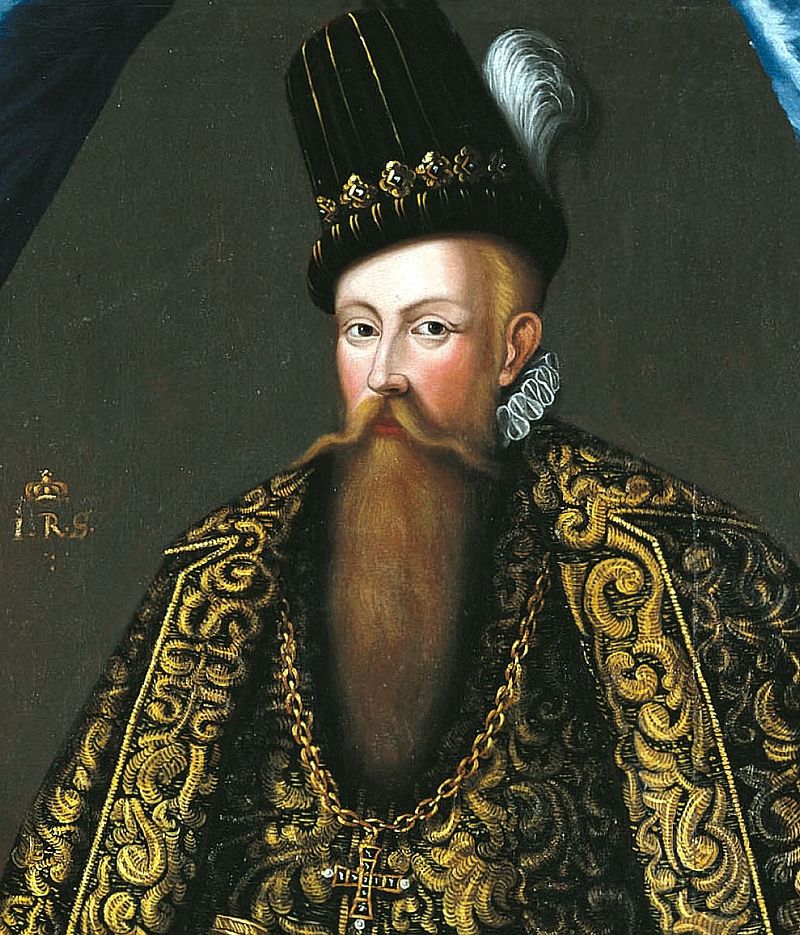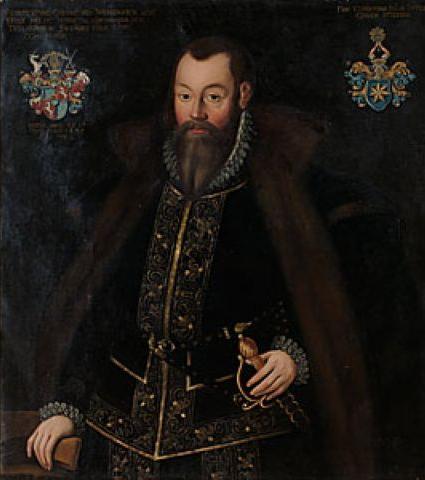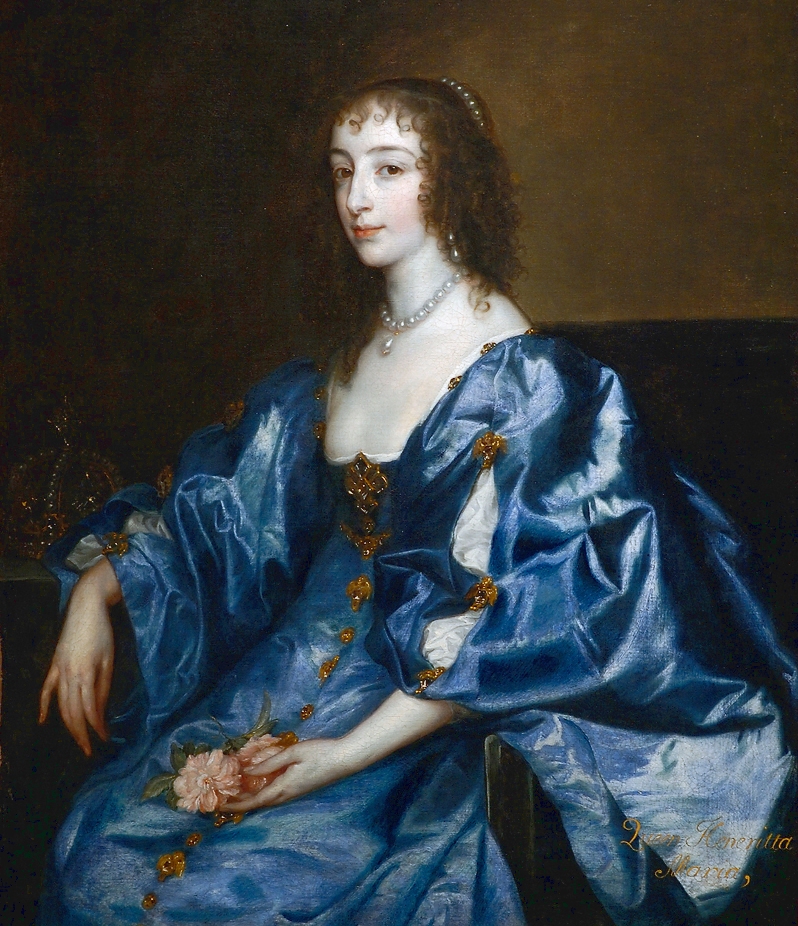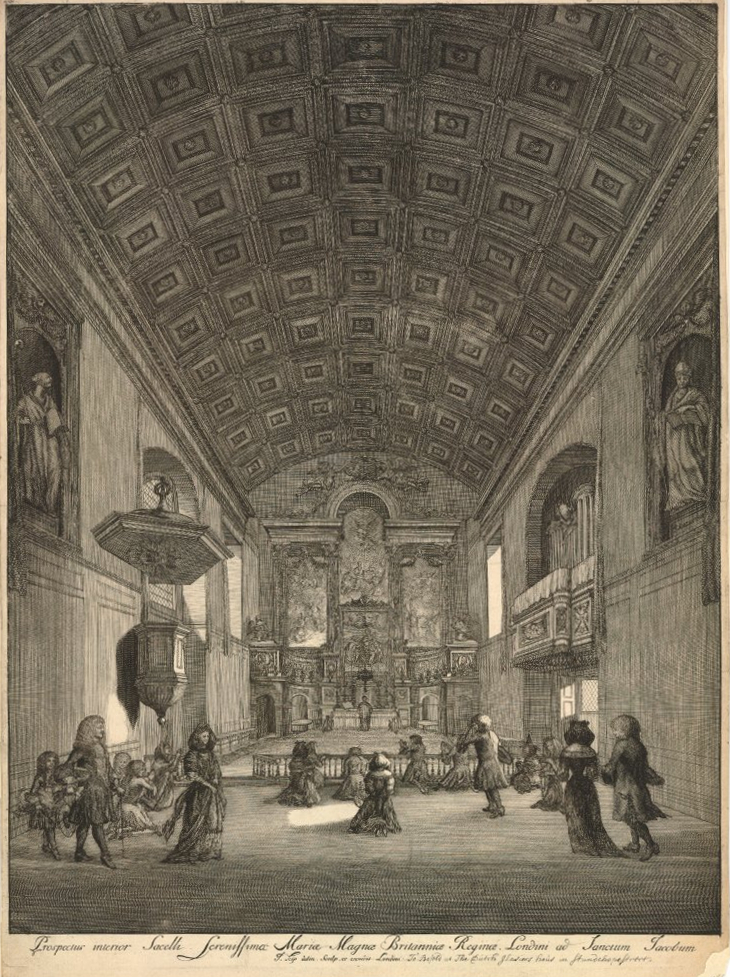by Susan Flantzer
© Unofficial Royalty 2021

Katarina Jagellonica of Poland, Queen of Sweden; Credit – Wikipedia
Katarina Jagellonica of Poland was the first of the two wives of Johan III, King of Sweden. Born on November 1, 1526, in Kraków, Poland, she was the fifth of the six children and the youngest of the four daughters of Sigismund I, King of Poland and Grand Duke of Lithuania (1467 – 1548) and his second wife Bona Sforza of Milan (1494 – 1557), daughter of Gian Galeazzo Sforza, Duke of Milan and Isabella of Naples, daughter of King Alfonso II of Naples.
Katarina had five siblings:
- Isabella Jagiellon (1519 – 1559), married John I Zápolya, King of Hungary, had one son John II Sigismund Zápolya, King of Hungary
- Sigismund II Augustus, King of Poland, Grand Duke of Lithuania (1520 – 1572), married (1) Elisabeth of Austria, no children (2) Barbara Radziwiłł, no children (3) Catherine of Austria, no children
- Sophia Jagiellon (1522 – 1575), married Heinrich V, Duke of Brunswick-Lüneberg, no children
- Anna Jagiellon, Queen of Poland, Grand Duchess of Lithuania in her own right (1523 – 1596), married Stephen Báthory, no children
- Wojciech Olbracht Jagiellon (born and died 1527), as a result of a fall from a horse, his mother gave birth prematurely and he died at birth

Ten portrait miniatures of the Jagiellon Family: Sigismund I, Bona Sforza, Sigismund II Augustus, Elizabeth of Austria, Barbara Radziwiłł, Catherine of Austria, Isabella Jagiellon, Catherine Jagiellon, Sophia Jagiellon, Anna Jagiellon; Credit – Wikipedia
From her father’s first marriage to Barbara Zápolya (1495 – 1515), a Hungarian noblewoman who died two months after giving birth to her second child, Katharina had two half-sisters:
- Hedwig Jagiellon (1513 – 1573), married Joachim II Hector, Elector of Brandenburg, had six children
- Anna (1515 – 1520), died in childhood
Katarina was raised with her sisters Sophia and Anna. Most of her parents’ attention was given to the two eldest children Isabella and Sigismund Augustus. Katarina was educated by Italian tutors to read, write, and speak Latin, German, and Italian. In addition, she was instructed in riding, dancing, singing, and playing several musical instruments.
After her father died in 1548, Katarina’s brother Sigismund II Augustus succeeded as King of Poland and Grand Duke of Lithuania. Sigismund II Augustus and his mother Bona Sforza previously had a conflict over his marriage to Barbara Radziwiłł, his former mistress. Bona eventually accepted her son’s decision to marry but their relationship was problematic and after her husband’s death, Bona and her three unmarried daughters moved away from the Polish court. In 1556, Katarina’s sister Sophia married and left for the Duchy of Brunswick-Lüneberg. At the same time, Katarina’s mother decided to return to her home country, the Duchy of Milan. Katarina and her sister Anna were sent to the Palace of the Grand Dukes of Lithuania in Vilnius so that there would be a royal presence in Lithuania.

Johan III, King of Sweden; Credit – Wikipedia
Katarina was now in her 30s, quite old for a princess to remain unwed. In 1560, the widowed Ivan IV (the Terrible), Tsar of Russia proposed marriage but her brother Sigismund II Augustus did not consent to the marriage. Meanwhile, in Sweden, King Gustav I Vasa of Sweden died and was succeeded by his son from his first marriage Erik XIV, King of Sweden. Erik summoned the Riksdag (parliament) and at his urging, the Riksdag curtailed the authority of his half-brothers Johan, Duke of Finland and Karl, Duke of Södermanland in the dukedoms given to them by their father. As a further move against his half-brother Johan, Duke of Finland, Erik placed Johan’s city of Reval, now Tallinn, Estonia, under his protective power and led expansionist campaigns of conquest in Estonia. Johan then turned to Sigismund II Augustus for an alliance. In 1562, Johan’s envoys proposed a marriage between Katarina and Johan, Duke of Finland. However, Polish custom required that princesses marry in seniority. Katarina’s sister Anna who was three years older but was unmarried persuaded her brother to allow the marriage and he agreed. At the age of 35, Katarina married 25-year-old Johan, Duke of Finland in Vilnius, Grand Duchy of Lithuania on October 4, 1562.
Johan and Katarina Jagellonica had three children:
- Isabella Vasa of Sweden (1564 – 1566), died in early childhood
- Sigismund III Vasa, King of Poland, King of Sweden, Grand Duke of Finland and Lithuania (1566–1632), married (1) Anne of Austria, had five children (2) Constance of Austria, had seven children
- Anna Vasa of Sweden (1568 – 1625), unmarried

Katarina and Johan with their son Sigismund in captivity at Gripsholm Castle; Credit – Wikipedia
In exchange for marrying Katarina, Johan received a substantial sum of money and land in Livonia (located in present-day Estonia and Latvia), which hindered the expansionist policy of his half-brother King Erik XIV. Erik’s response was to send 10,000 troops to besiege Johan’s home Turku Castle in Turku, Finland. On August 12, 1563, Turku Castle surrendered. Johan was tried for high treason and sentenced to death but he was pardoned and imprisoned for four years with Katarina at Gripsholm Castle in Mariefred, Södermanland, Sweden. Johan and Katarina’s two eldest children were born in captivity at Gripsholm Castle.
Due to King Erik XIV’s mental health issues, his participation in the 1567 Sture Murders, and his unpopular marriage to his mistress Karin Månsdotter, his younger half-brothers led a revolt against him with the support of many nobles that ended in Erik XIV’s removal as King of Sweden in September 1568 and his eldest half-brother succeeding to the throne as Johan III, King of Sweden. In January 1569, the Riksdag (parliament) legally dethroned Erik. Johan and Katarina were crowned King and Queen of Sweden on July 10, 1569, at Uppsala Cathedral in Uppsala, Sweden. Erik was imprisoned in various castles for nine years and died on February 26, 1577, aged 43. He was most likely murdered due to the three major conspiracies that attempted to depose his half-brother King Johan III and place Erik back on the Swedish throne. An examination of his remains in 1958 confirmed that Erik probably died of arsenic poisoning.
As Queen Consort of Sweden, Katarina had much political influence and influenced her husband in many areas, such as his foreign policy and interest in Renaissance art. Johan III named her regent of Sweden should he die while their son was a minor. However, her greatest influence was in religious policy. The Protestant Johan had clear Catholic sympathies, inspired by the Catholic Katarina, and this created issues with the Protestant Swedish clergy and nobility. Their son Sigismund was raised as a Catholic in the hopes that he would acquire the Polish crown in the future.

Katarina’s tomb in Uppsala Cathedral; Credit – Wikipedia
In the spring of 1583, Katarina became seriously ill with gout, and after much suffering, she died on September 16, 1583, aged 56, at Tre Kronor Castle in Stockholm, Sweden, and was buried in Uppsala Cathedral in Uppsala, Sweden. After Katarina’s death, Johan III married again to Gunilla Bielke and had one son.

Katarina’s son Sigismund Vasa, circa 1590; Credit – Wikipedia
In 1587, Katarina and Johan III’s son Sigismund was elected monarch of the Polish – Lithuanian Commonwealth and became King of Poland and Grand Duke of Lithuania. Upon the death of his father Johan III in 1592, Sigismund also became King of Sweden. However, the Catholic Sigismund was deposed in 1599 as King of Sweden by his Protestant uncle who then reigned as King Karl IX of Sweden. Sigismund lived the remainder of his life in Poland and reigned for a total of 45 years in Poland and Lithuania, dying in 1632.
This article is the intellectual property of Unofficial Royalty and is NOT TO BE COPIED, EDITED, OR POSTED IN ANY FORM ON ANOTHER WEBSITE under any circumstances. It is permissible to use a link that directs to Unofficial Royalty.
Kingdom of Sweden Resources at Unofficial Royalty
- Kingdom of Sweden Index
- Swedish Orders and Honours
- Swedish Royal Dates
- Swedish Royal Burial Sites
- Swedish Royal Christenings
- Swedish Royal FAQs
- Swedish Royal Residences
- Swedish Royal Weddings
- Line of Succession to the Throne of Sweden
- Profiles of the Swedish Royal Family
Works Cited
- En.wikipedia.org. 2021. Bona Sforza – Wikipedia. [online] Available at: <https://en.wikipedia.org/wiki/Bona_Sforza> [Accessed 16 May 2021].
- En.wikipedia.org. 2021. Catherine Jagiellon – Wikipedia. [online] Available at: <https://en.wikipedia.org/wiki/Catherine_Jagiellon> [Accessed 16 May 2021].
- En.wikipedia.org. 2021. Sigismund I the Old – Wikipedia. [online] Available at: <https://en.wikipedia.org/wiki/Sigismund_I_of_Poland> [Accessed 16 May 2021].
- Flantzer, Susan. 2021. Johan III, King of Sweden. [online] Available at: <https://www.unofficialroyalty.com/johan-iii-king-of-sweden/> [Accessed 16 May 2021].
- Pl.wikipedia.org. 2021. Katarzyna Jagiellonka – Wikipedia, wolna encyklopedia. [online] Available at: <https://pl.wikipedia.org/wiki/Katarzyna_Jagiellonka> [Accessed 16 May 2021].
- Sv.wikipedia.org. 2021. Katarina Jagellonica – Wikipedia. [online] Available at: <https://sv.wikipedia.org/wiki/Katarina_Jagellonica> [Accessed 16 May 2021].










































